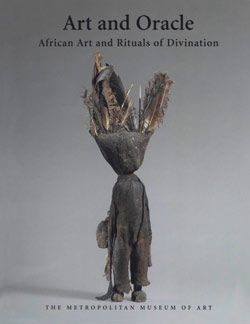Maternity Figure (Ntekpe)
Not on view
The idea for this maternity figure was born out of a divinatory revelation, and it was executed as an enduring tribute to that inspiration, shaped by the talent of a female artist.
In Igbo society, some degree of self-determination guides fluid religious practices. This is reflected in the widespread assumption that the capacity to divine is an innate human ability, giving individuals the power to discern a course of action that will address their own particular needs. In northeastern Igboland, this is manifested through a distinctive divination system and shrine complex. Through revelations communicated to individuals by divination, deities may prescribe the creation of shrines in their honor. As a result of implementing these requests, family compounds usually have at least one shrine, which is placed at the entrance or outside the home or in a domestic garden. Often these shrines come into being for purposes of healing, but as they acquire reputations, their purview may broaden. Divination may further reveal a deity’s desire that the shrine feature protective ceramic vessels and figures, making it a dazzling sight.
The hand-built and coiled clay creations designed by Igbo women have been recognized as among the finest achievements in west African ceramic traditions. This genre of figurative representation is generally the province of elder female potters past menopause. Although younger women may make utilitarian vessels, it is thought that ritual representations may in some way threaten their potential to conceive.
Such figurative terracottas created for shrines may be commissioned directly from a female potter or acquired at market. Known as ntekpe, these "children of the shrine" often take the form of pairs of male and female figures or a single mother and child. Although certain images are widespread, the significance of the iconography within particular shrines reflects a great deal of individual interpretation. The work shown here, a tribute to motherhood, renders its classic subject in an especially sensitive and evocative manner. The female figure sits on a stool, which is fused with her lower back, legs extended before her. In her arms she cradles a child, who nurses at her breast. Her head is crowned by a coiffure composed of a series of five extensions that radiate outward and upward, conveying a sense of vitality.
Further Reading:
Herbert M. Cole and Chike C. Aniakor, Igbo Arts: Community and Cosmos, exh. Cat. (Los Angeles: UCLA Fowler Museum of Cultural History, 1984.
Alisa Lagamma, Art and Oracle: African Art and the Rituals of Divination. Exh. Cat. New York: The Metropolitan Museum of Art, 2000.
Due to rights restrictions, this image cannot be enlarged, viewed at full screen, or downloaded.
This artwork is meant to be viewed from right to left. Scroll left to view more.




